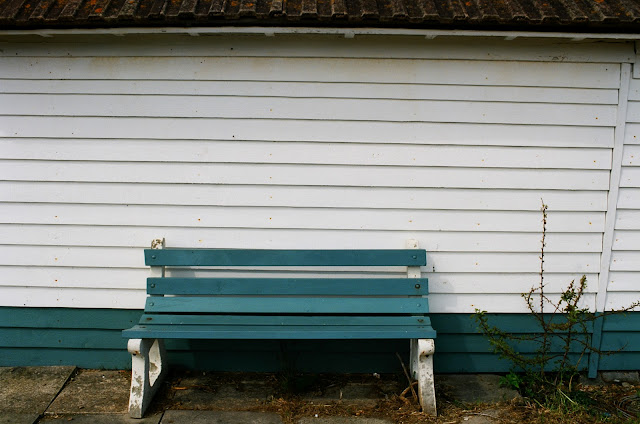Friday, 30 November 2012
Thursday, 29 November 2012
LOST PROPERTY
Is there a repository for lost items of clothing?
Careless abandonment, either left or right
A clanish kinship for solitary gloves.
Tuesday, 7 August 2012
Sunday, 15 July 2012
BENCHES: OPTIMISTIC VIEWS - DEAL KENT
Distant horizons, blue skies.
Sunlight falls with a sometimes gentle breeze.
Benches beckon to stay awhile - breathe deeply and dream.
Monday, 18 June 2012
BENCH THEORIES
Public spaces are overlooked, taken for granted. We see a park, piazza, square, as part of our urban geography. Public spaces without seating are little more than urban thoroughfares. With no opportunity to stop there is no possibility of watching or being watched. Chance communications are reduced to the level of a stranger stopping you on the street to ask directions or a charity mugger feigning faux friendship in the hope of procuring money. Without public seating and spaces the urban topography is reduced to the commercial and the private. Public spaces are a symbol of democracy where individuals of any ilk can gather.
London prides itself on its frenetic, productive environment but usually at the expense of its citizens. Benches are an invitation to stop, rest, socialise but their use is determined by their location. Often positioned with little regard for the sitter – the bench pays lip service to the idea of a democratised urban space but is often designed and positioned to give the least comfort and or pleasure. Benches operate as a metaphor for the all prevailing yet subterfuge nature of social control in contemporary society - they are a symbol of civic pride but readily removed if frequented by the wrong sort of visitors.
Visual Athletics Club has been recording benches in London and further afield since 2007. This comprehensive collection of images operates on multifarious levels - as art, celebration, social document, and a critique of public design. The anonymity of the benches and their exact location allows the viewer to engage objectively – the benches are ready to receive visitors but do not reveal the who or the where. The lack of taxonomic reference creates a paradox, familiar yet alien, thus allowing the viewers to form their own subjective connection.
For a comprehensive survey of London streets and public seating see Jan Gehl's 2004 survey Towards a fine City for People.
For a comprehensive survey of London streets and public seating see Jan Gehl's 2004 survey Towards a fine City for People.
Friday, 8 June 2012
Thursday, 24 May 2012
Tuesday, 1 May 2012
Thursday, 19 April 2012
BENCHES: LONDON #12
Labels:
Barbican,
Benches,
Blackfriars,
Greenwich,
Little Venice,
London,
London benches,
Pall Mall,
Tate
Subscribe to:
Comments (Atom)
























































